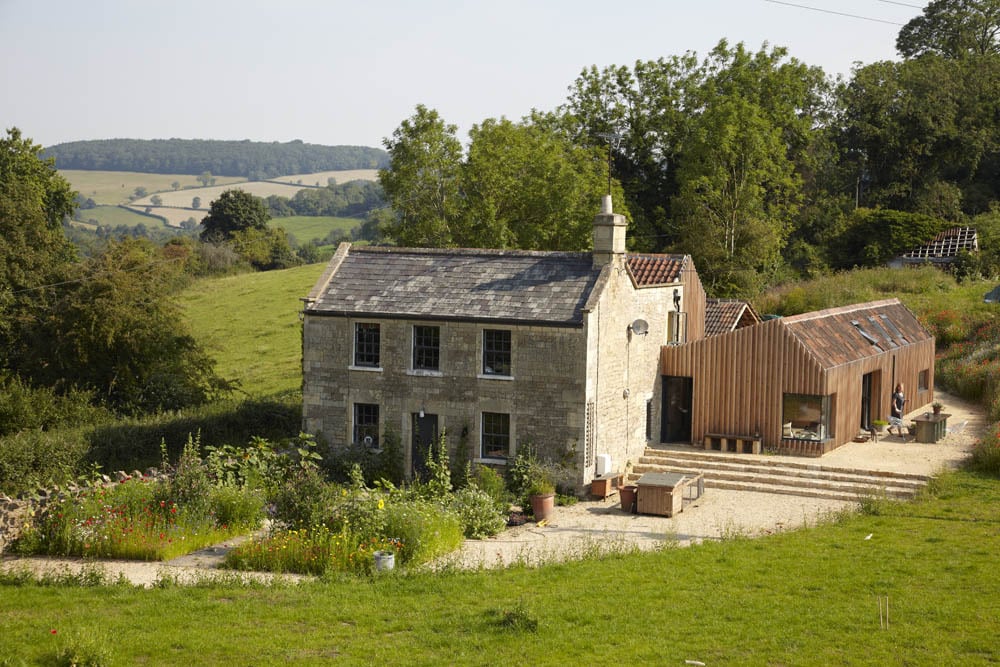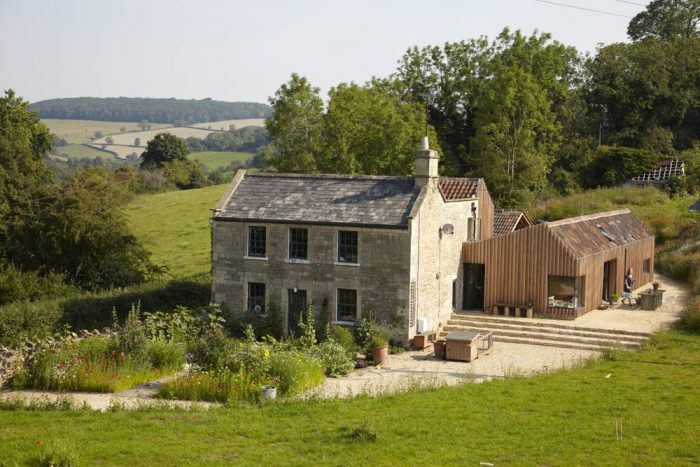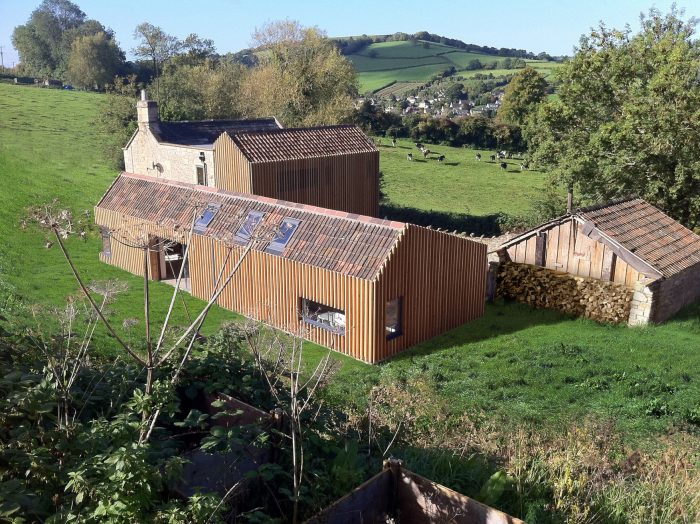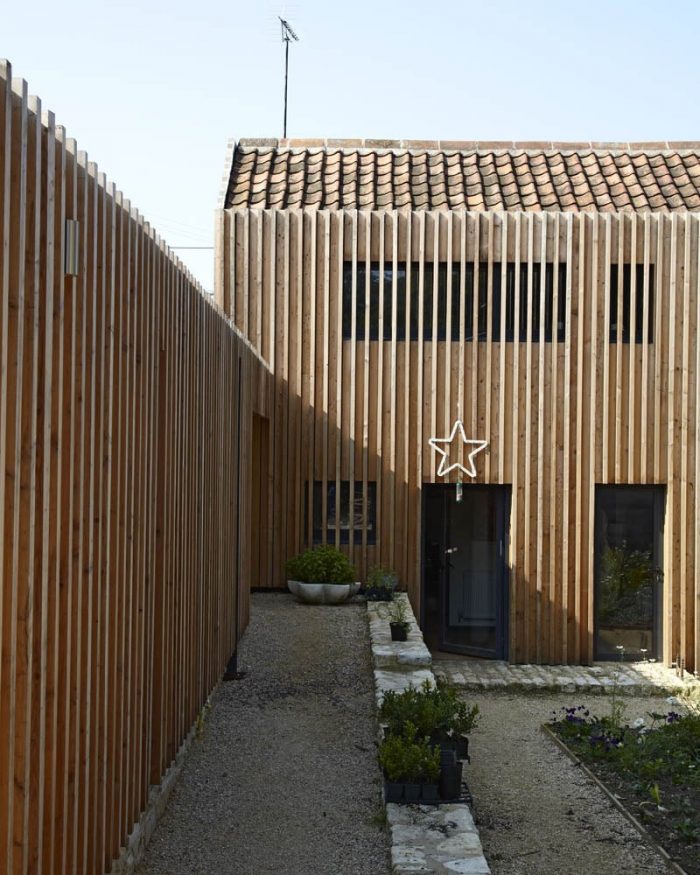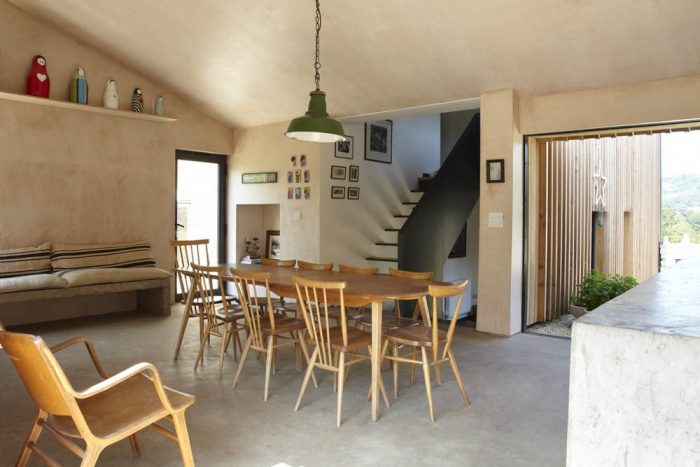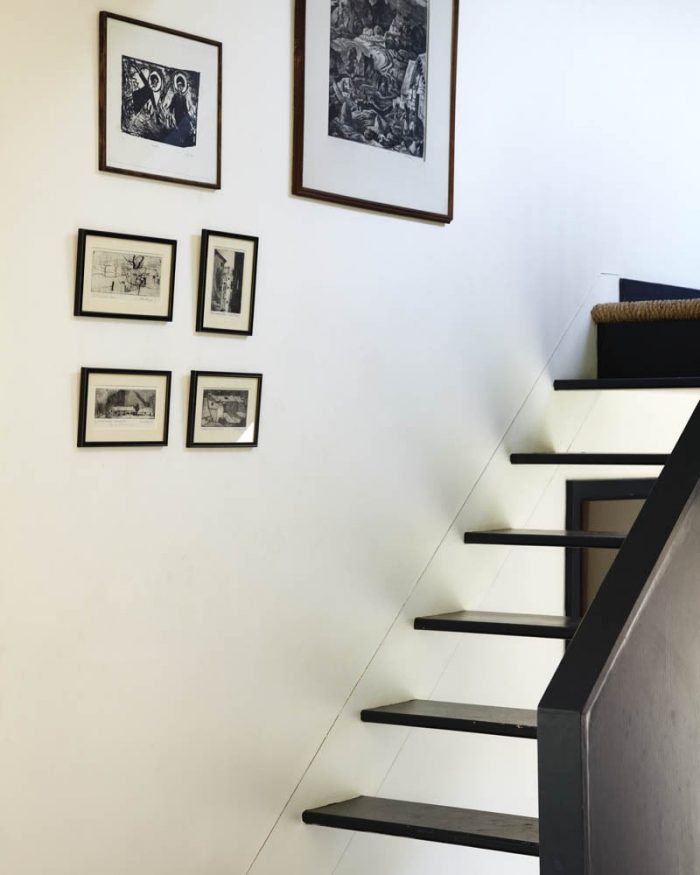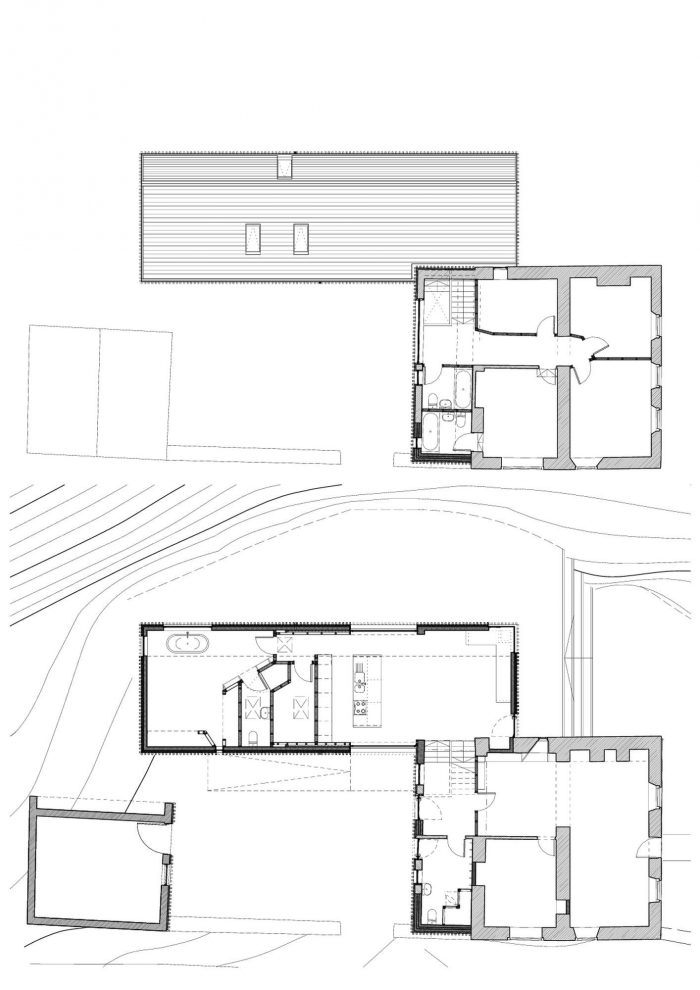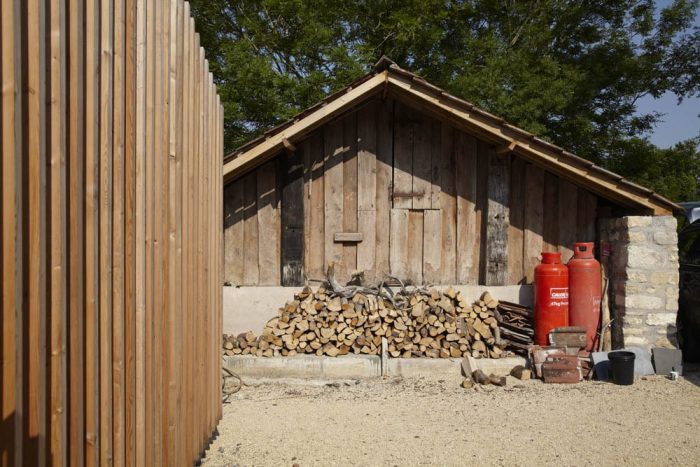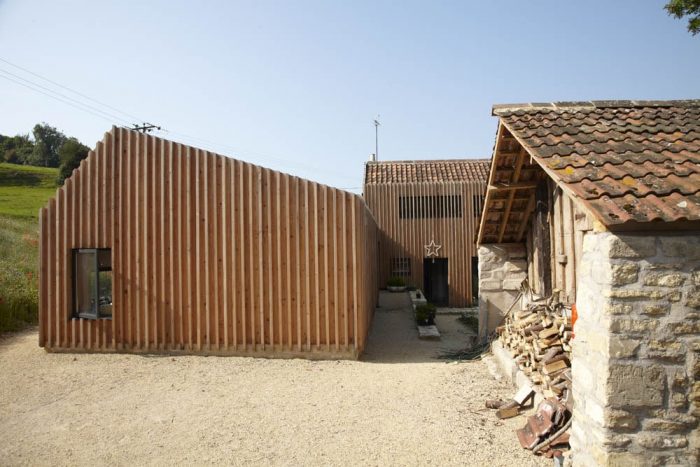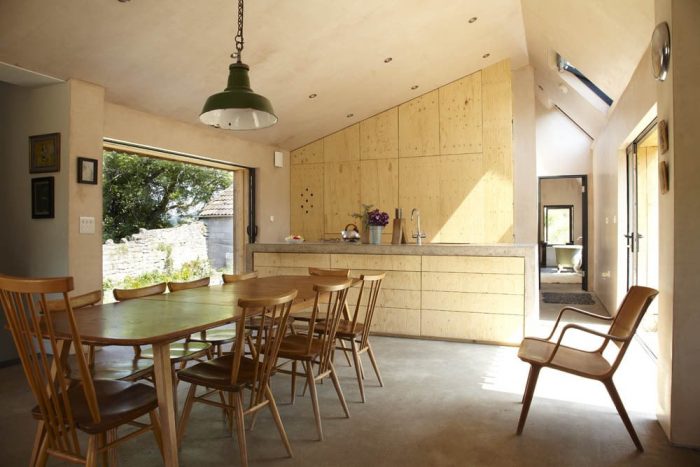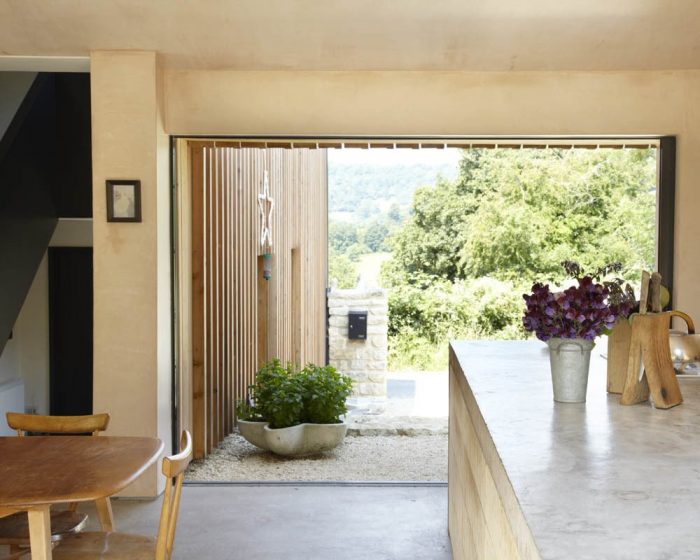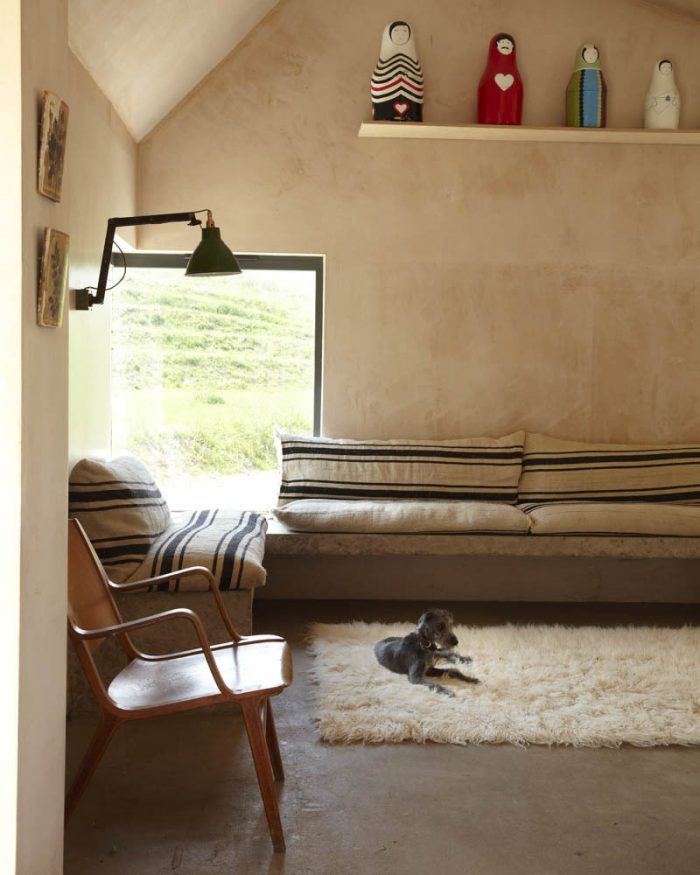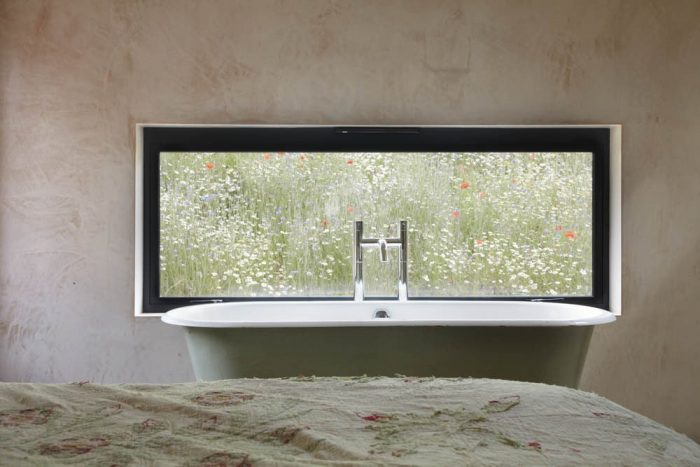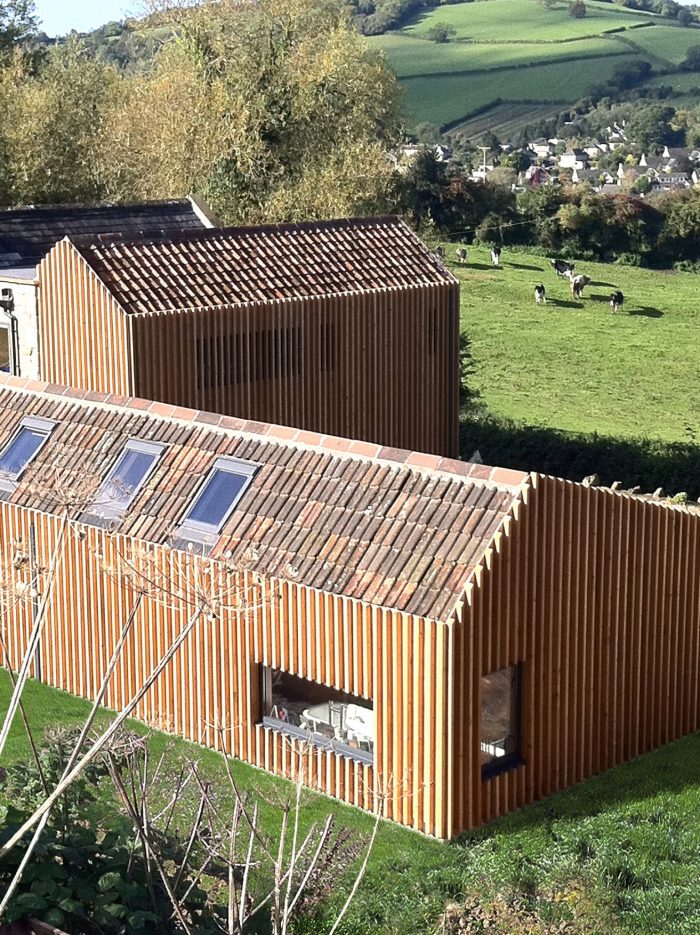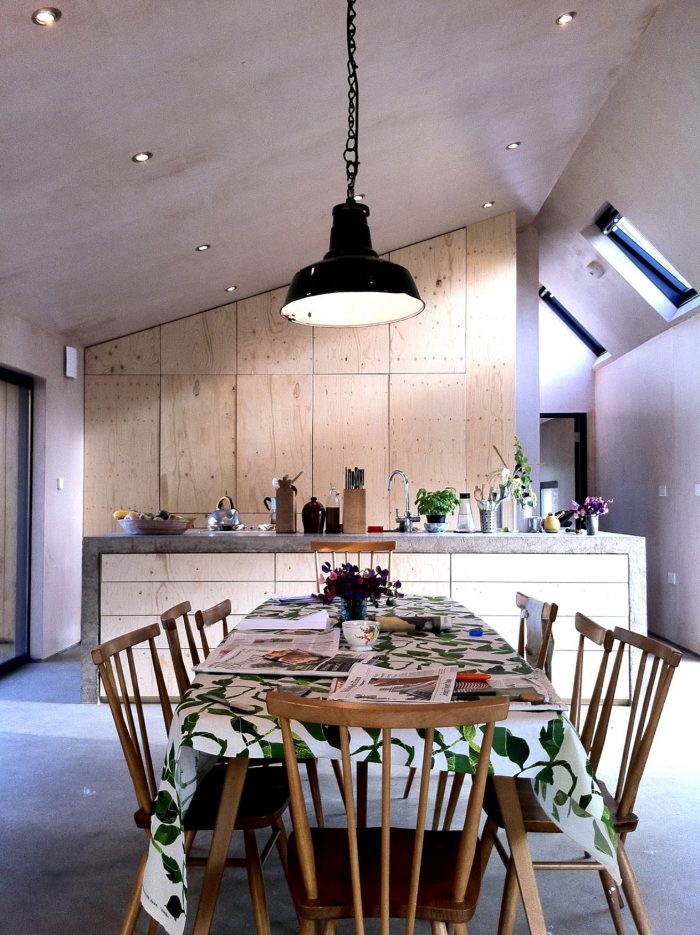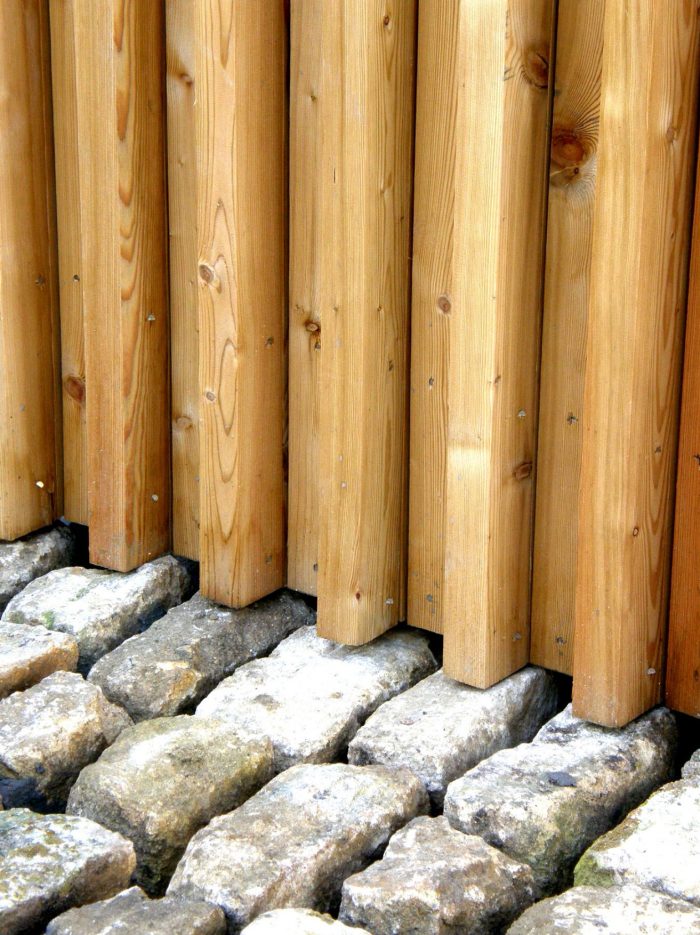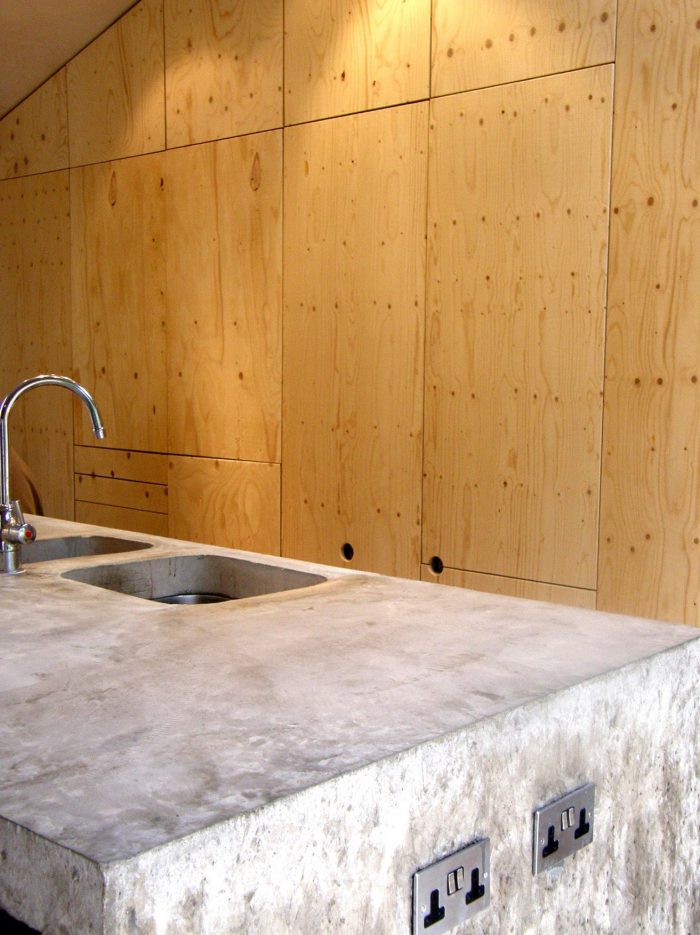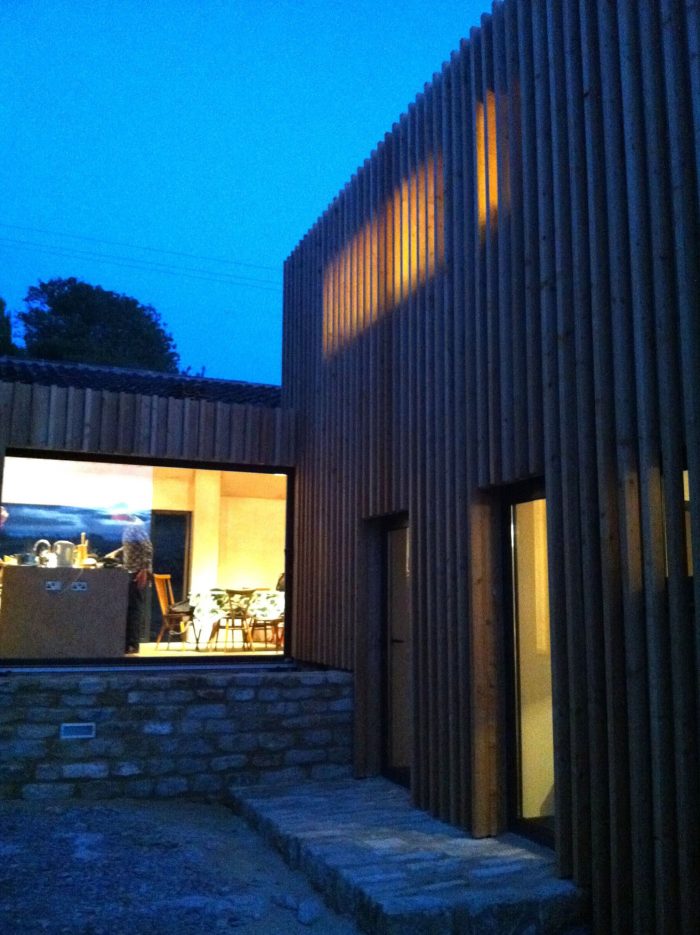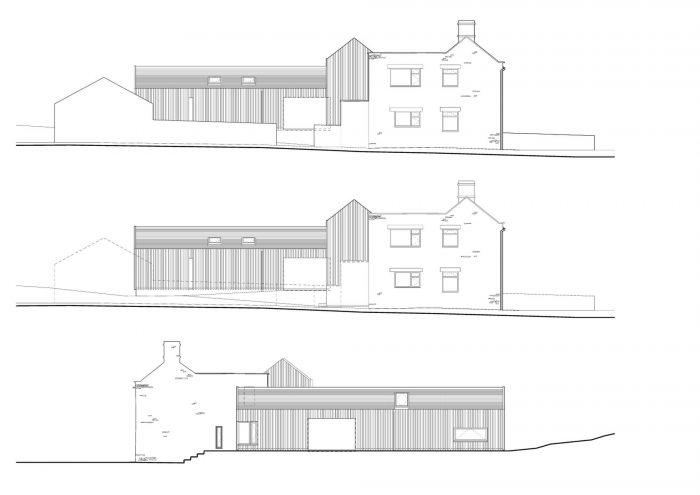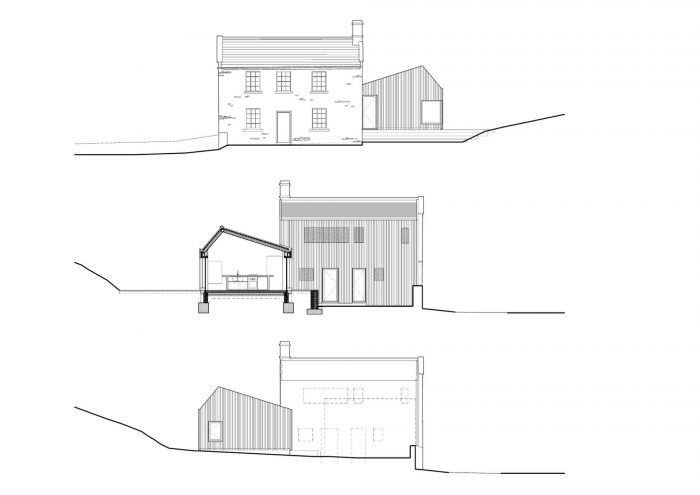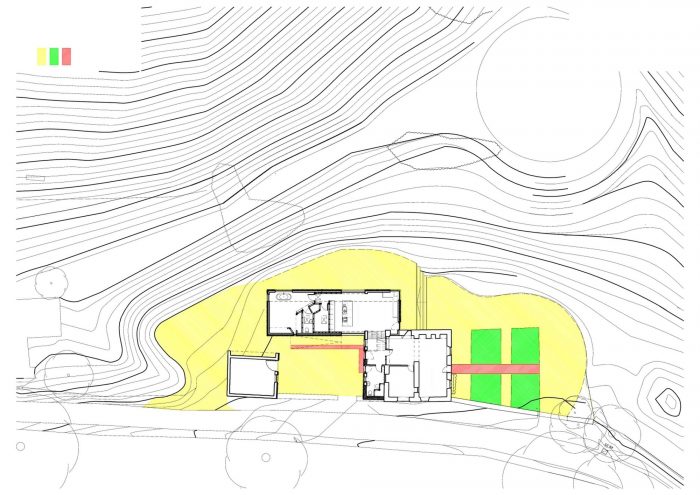Xa Sturgis和Anna Benn是最棒的客户,他们对位于圣凯瑟琳山谷的一个严重扩建但原本非常漂亮的农舍进行了改建和增建。扩建部分使用了被拆除的谷仓的材料,包层的设计是为了掩盖现有扩建部分的比例,同时在新的部分上拉开,以显示景观的主要观点。这是一个非常适度的、非常普通的东西,令人惊讶的是,它引起了很大的兴趣。我在为Xa做这个的时候感到很尴尬,因为Eric Parry正在为他做Holburne的工程,每平方米的预算大约是20倍。
Alterations and additions to a hideously extended, but originally very pretty farmhouse in St Catherine’s valley for Xa Sturgis and Anna Benn who were the most fantastic clients. The extension used in part materials from the demolished barns, and the cladding was designed to conceal the proportions of the existing extension while pull apart on the new bit to reveal key views into landscape. It is a very modest, very vernaculary thing really, and surprising that it generated a great of interest. I was rather embarrassed doing this for Xa at the same time as Eric Parry was doing the Holburne for him, with a budget something like 20 times the cost per m2.
当时,我对桑迪-威尔逊在剑桥的Scroope Terrace扩建工程中的粗糙感相当着迷,我喜欢那座建筑中的所有混凝土长椅等等。Starfall有一个非常简单的不对称的部分,让晨光深入到建筑中,使其充满光亮。对我来说,这个项目也是调和Moonshine所有热能缺陷的一种方式,Moonshine太轻了–Starfall在热能方面是无情的巨大,而且效率惊人。
At the time, I was rather obsessed by the rawness in Sandy Wilson’s Scroope Terrace extension in Cambridge in which I was working – I love all the concrete benches and so on in that building. Starfall has a very simple asymmetric section that allows the morning light to penetrate deep into the building and flood it with light. For me, the project was also a way of reconciling all the thermal deficiencies of Moonshine, which is far too lightweight – Starfall is ruthlessly thermally massive, and with it incredibly efficient.
关键的细节是木材覆层,它的设计是为了掩盖令人吃惊的丑陋的后方扩建部分的开口比例(尴尬),客户认为,考虑到拆除重建同等体积的成本,必须保留该部分。该项目预算有限,而且是英国最保守的规划委员会(巴斯)。
The key detail is the timber cladding which is designed to conceal the (awkward) proportions of the openings of the astonishingly ugly rear extension which the client deemed must stay given the cost of demolition just to rebuild the equivalent volume. The project had a limited budget, and the most conservative planning committee (Bath) in the UK.
我们的策略是找到一种材料语言–包层,使现有建筑的丑陋被掩盖和隐藏起来,同时也将新的扩展部分无缝包裹起来。我们的目的也是要做一个性能非常好的建筑,所以在开口的方式和位置上都很经济。例如,在你做饭的地方是完全透明的,滑动的玻璃屏风消失在墙里,让山谷的感觉贯穿整个场地,让你感觉就像在外面做饭一样(就像在月光下),但其他的开口则更有选择性。在一个现成的混凝土长椅上方有一个角窗,用于阅读周日的报纸;在浴室上方有一个槽窗,可以瞥见野生花库;东侧的屋顶灯可以让晨光尽可能早地进入建筑的中心(因此是不对称的间距),新扩建部分的轮廓设计允许最大的光线穿透到一个封闭的草药院子里等等。
The strategy was to find a material language – the cladding – that allowed the ugliness of the existing building to be masked and concealed, whilst also wrapping seamlessly round a new extension. The intention also was to do a building that performs really well, so is economical in how and where openings are placed. For example, there’s complete transparency where you cook, with sliding glass screens that disappear into the walls allowing a sense of the valley side to run through the site and allow you to feel as if you are cooking outside (as at moonshine) but then other openings are more selective: a corner window above an insitu concrete bench for reading Sunday papers, a slot window above the bath to allow glimpses of a wild flower bank, rooflights on the east side to allow morning light into the heart of the building as early as possible (hence asymmetric pitch) with the profile of the new extension designed to allow maximum light to penetrate into a contained herb courtyard etc… The thermal mass is ruthlessly exposed internally: concrete floor, bare plastered concrete block walls, concrete kitchen and other built in benches and superinsulated around this…
外部覆层的设计是为了能够掩盖现有开口的比例(即一块可以穿过现有开口的木板),并在必要时允许隐私,但也要无缝地环绕扩展部分,使新的东西与现有的东西融合。整个扩建部分被抬高了5个台阶,以便从花园的墙壁上看到山谷,同时也可以 “指挥 “外面的公共通道(即俯视它)。几乎所有的装饰都是自己完成的:没有封顶的落叶松,从工地上现有的建筑物上重新使用的粘土瓦(我们被告知,除非我们使用它们,否则我们不会得到规划,因为我们已经被拒绝了三次),裸露的混凝土,百叶窗夹板,裸露的石膏等等。
The external cladding was designed to be able to conceal the proportions of the existing openings (ie a board that could run passed the existing opening) and to allow privacy where necessary, but then seamlessly wrap also around the extension to integrate the new with the existing. The entire extension was raised up 5 steps to allow views over the garden wall to the valley, and also to ‘command’ the public lane outside (ie look down on to it). Pretty much all the finishes are self finished: larch with no capping, reused clay tiles from existing buildings on the site (which we were told that unless we used them we wouldn’t get planning having been refused three times), exposed concrete, shuttering ply joinery, bare plaster, etc.
这所房子已经被客户住得很好了–我喜欢他们住在那里的宽松和创造性的方式–以及他们是多么的不珍惜和控制–他们丰富的精神从这里迸发出来。
The house has been beautifully occupied by the clients – I love the loose and inventive way that they live there – and how un precious and controlling they are – their abundant spirit bursts out of it.
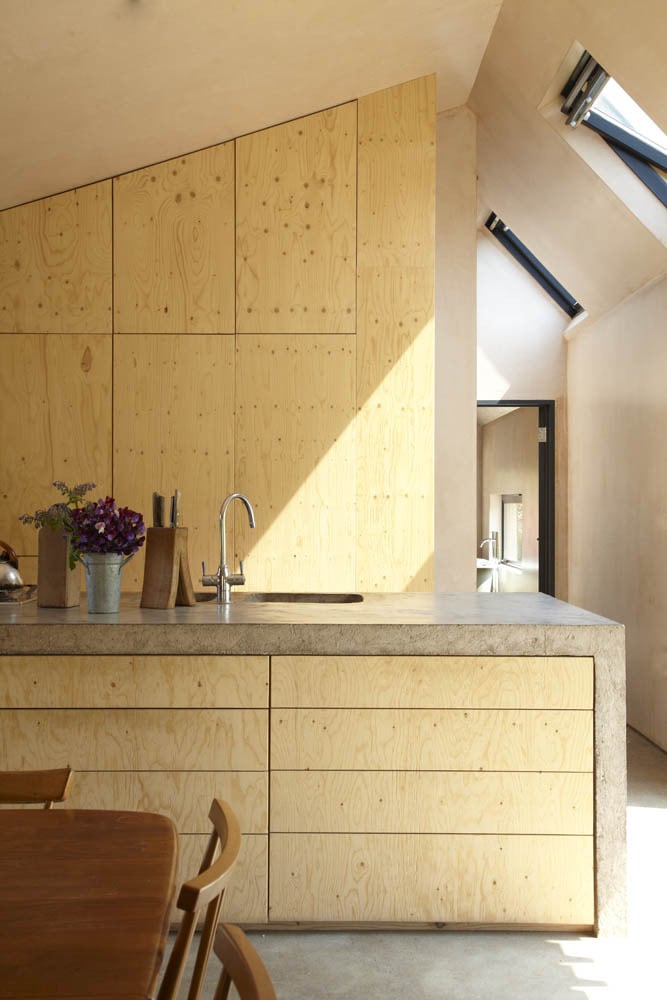
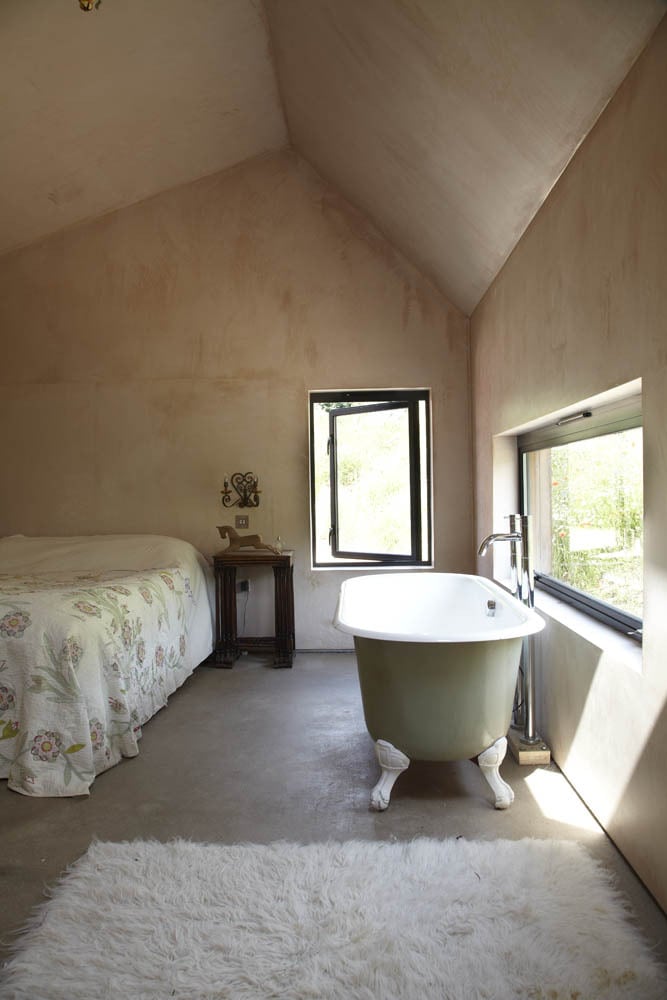
Architects: Invisible Studio
Area : 220 m²
City:BATH
Country:UNITED KINGDOM

